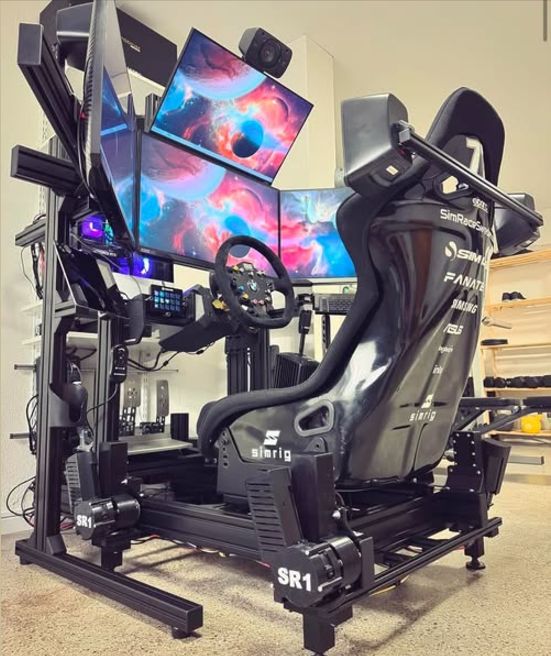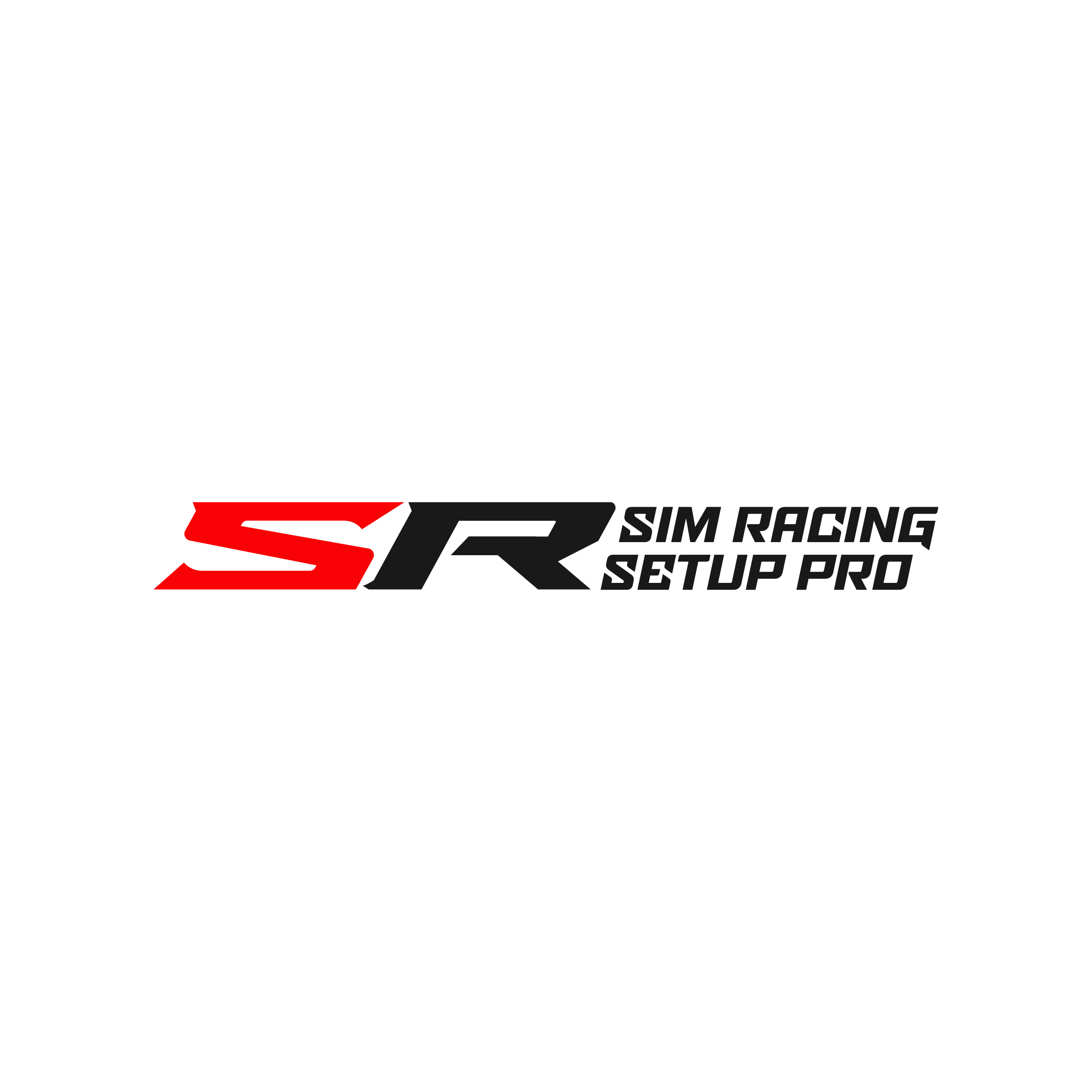
Guide AI-Driven Precision, Motion Sim Integration & Next-Gen Performance
The Science of Sim Racing Optimization
Sim racing has evolved beyond a mere hobby—it’s now a highly effective training tool for professional and amateur drivers alike. With advancements in AI, motion simulation, and biometric feedback, sim racing setups can now replicate real-world racing conditions, offering an immersive and adaptive training experience.
This guide pushes beyond the basics by integrating:
✅ AI-driven force feedback (FFB) calibration for dynamic steering adaptation
✅ Next-gen motion simulators with 6DOF, wind simulation, and biometric monitoring
✅ Adaptive AI coaching with customized training drills based on real-time telemetry data
✅ Optimized field-of-view (FOV) settings to improve depth perception and spatial awareness
Goal: Not just to build a sim racing rig, but to engineer an adaptive, high-performance racing setup that evolves with your driving style, skill level, and training needs.
Step 1: Choosing an AI-Ready Sim Racing Rig
Your cockpit is the foundation of your setup, influencing stability, comfort, and training effectiveness. A well-designed rig can reinforce proper muscle memory and replicate the ergonomics of real race cars.
Best Pre-Built Rigs for Stability & AI Integration
✔️ Next Level Racing GT Track: Rigid frame, compatible with motion platforms
✔️ Trak Racer TR160: Modular aluminum chassis, ideal for advanced AI-powered systems
✔️ Sim-Lab P1X: Preferred by esports professionals, fully adjustable for direct drive wheels
Custom DIY Rigs for Flexibility & Future-Proofing
✔️ 8020 Aluminum Profile Rigs: Allows for customized AI feedback integration
✔️ Hydraulic-Integrated Cockpits: Supports full 6DOF motion simulation and biometric sensors
Pro Insight: Match your rig’s seat and wheel positioning to real-world racing styles (e.g., F1, GT3, Rally) to enhance training transferability.
Step 2: AI-Enhanced Force Feedback (FFB) Systems
How AI Improves Force Feedback (FFB) Realism
Traditional FFB relies on manual tuning, but AI-driven systems dynamically adapt to track conditions, driving style, and car behavior.
✔️ Real-time telemetry analysis: AI tracks grip levels, suspension compression, and tire slip
✔️ Adaptive force feedback: Modifies steering resistance and vibration for optimal control
✔️ Predictive adjustment: Simulates mechanical failures like suspension damage or brake fade
Top AI-Powered FFB Systems:
- AI-Racing Engineer: Learns from your driving patterns to fine-tune FFB strength dynamically
- SimHub Smart FFB: Uses machine learning to calibrate FFB based on specific car and track data
- iRacing AI Coach: Analyzes pro esports telemetry to recommend optimal FFB settings
Future Tech: AI-driven FFB systems may soon incorporate biometric data, adjusting steering force based on muscle fatigue and heart rate variability.
Step 3: Pedals with Load Cell & Hydraulic Technology
How High-End Pedals Enhance Training Quality
Professional pedals offer precise braking control by measuring pressure instead of pedal travel.
| Pedal Type | Measurement Method | Training Benefit |
|---|---|---|
| Potentiometer Pedals | Measures travel distance | Basic input, lacks consistency |
| Load Cell Pedals | Measures applied force | Improves braking precision by 40% |
| Hydraulic Pedals | Simulates fluid resistance | Replicates real-world brake feel |
Recommended Pedals for AI Integration:
- Fanatec CSL Elite LC: Ideal for entry-level load cell performance
- Heusinkveld Sprint: Best for esports-level braking control
- SimCraft Hydraulic Pedals: Offers true F1-style braking dynamics
Pro Tip: Use AI tools like SimHub Pedal Analyzer to visualize braking consistency and optimize braking points.
Step 4: Vision Optimization & Field of View (FOV) Calibration
Setting Up FOV for Realistic Depth Perception
A correct FOV setting enhances spatial awareness, making braking and cornering more natural.
| Display Type | Optimal FOV Settings | Best Use Case |
|---|---|---|
| Single Monitor | 27-35° (use an FOV calculator) | Casual to intermediate racers |
| Triple Monitors | 45-60° (aligned for peripheral vision) | Competitive racing setups |
| VR Headset | Calibrate IPD for true-to-life depth scaling | Maximum immersion |
✔️ Use AI-assisted FOV tools to adjust settings dynamically based on track type and car class.
✔️ Match screen height to eye level to prevent visual distortion and neck strain.
Step 5: Motion Simulators & Advanced Sensory Feedback
Simulating G-Forces with Motion Platforms
Motion simulators enhance immersion by replicating vehicle dynamics, including weight transfer, braking forces, and suspension behavior.
Best Motion Platforms for Pro-Level Training:
- DOF Reality Motion Platforms: Supports 3DOF & 6DOF systems
- Next Level Racing Motion V3: Integrates with AI systems for real-time motion adaptation
- G-Force Haptic Seats: Uses pressure feedback to simulate cornering and braking G-forces
Pro Tip: Combine motion rigs with wind simulators to replicate airflow dynamics, improving speed perception and immersion.
Step 6: AI-Generated Racing Drills & Biometric Feedback
Custom Training Drills Using Adaptive AI
AI can create dynamic training environments that push your skills to the next level.
✔️ Braking precision drills: AI adjusts pedal resistance based on lap data
✔️ Cornering practice: Adaptive force feedback helps fine-tune throttle and steering input
✔️ Endurance simulations: AI monitors heart rate & muscle tension, adjusting feedback strength to mimic real-world fatigue
Top AI Training Tools:
- OpenTrack AI: Analyzes braking/throttle timing and suggests improvements
- iRacing Dynamic Drills: Simulates mechanical failures and weather changes
- SimHub Biometric Integration: Syncs heart rate monitors with in-game feedback
Future Vision: AI could soon offer virtual coaching, providing live voice feedback and personalized performance analytics during races.
Conclusion: Your Path to Elite Sim Racing
With AI-powered force feedback, advanced motion simulation, and dynamic training drills, you can transform your sim racing setup into a professional-grade driver training system.
Level Up: Utilize customized AI tools to analyze your performance, refine your driving technique, and shave seconds off your lap times.
